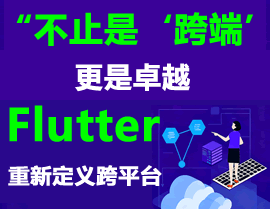uniapp如何使用three.js实现3D效果
在uniapp中集成three.js时遇到了一些问题,想请教大家:如何在uniapp项目中正确引入和使用three.js来实现3D效果?我尝试直接npm安装three.js后在页面中引入,但运行时总是报错。是否需要特殊配置webpack或者使用特定的three.js版本?另外,在uniapp的vue文件中应该如何编写three.js的初始化代码?能否提供一个简单的完整示例,包括场景、相机和立方体的创建流程?
2 回复
在uni-app中使用three.js实现3D效果,步骤如下:
-
安装依赖
在项目根目录执行:
npm install three -
引入three.js
在vue页面中导入:import * as THREE from 'three' -
创建3D场景
在mounted中初始化:const scene = new THREE.Scene() const camera = new THREE.PerspectiveCamera(75, window.innerWidth/window.innerHeight, 0.1, 1000) const renderer = new THREE.WebGLRenderer({ alpha: true }) renderer.setSize(window.innerWidth, window.innerHeight) this.$refs.canvas.appendChild(renderer.domElement) -
添加3D物体
const geometry = new THREE.BoxGeometry() const material = new THREE.MeshBasicMaterial({ color: 0x00ff00 }) const cube = new THREE.Mesh(geometry, material) scene.add(cube) camera.position.z = 5 -
动画循环
function animate() { requestAnimationFrame(animate) cube.rotation.x += 0.01 cube.rotation.y += 0.01 renderer.render(scene, camera) } animate()
注意事项:
- 需在
pages.json中配置页面样式为"navigationStyle": "custom" - 建议使用
uni.createSelectorQuery()获取节点尺寸 - 移动端注意性能优化,避免复杂模型
通过以上步骤即可在uni-app中实现基础3D效果,可根据需求扩展灯光、材质等特性。
在 UniApp 中使用 Three.js 实现 3D 效果,可以通过 WebView 组件或 Canvas 组件实现。以下是两种方法的简要说明和示例代码:
方法一:使用 WebView 组件(推荐,兼容性好)
- 创建 H5 页面:在 UniApp 项目中创建一个 H5 页面(如
three.html),并在其中引入 Three.js 库。 - 编写 Three.js 代码:在 H5 页面中初始化 Three.js 场景、相机、渲染器等。
- 通过 WebView 加载:在 UniApp 页面中使用
<web-view>组件加载该 H5 页面。
示例代码:
- H5 页面(three.html):
<!DOCTYPE html>
<html>
<head>
<script src="https://cdnjs.cloudflare.com/ajax/libs/three.js/r128/three.min.js"></script>
</head>
<body>
<script>
const scene = new THREE.Scene();
const camera = new THREE.PerspectiveCamera(75, window.innerWidth / window.innerHeight, 0.1, 1000);
const renderer = new THREE.WebGLRenderer();
renderer.setSize(window.innerWidth, window.innerHeight);
document.body.appendChild(renderer.domElement);
const geometry = new THREE.BoxGeometry();
const material = new THREE.MeshBasicMaterial({ color: 0x00ff00 });
const cube = new THREE.Mesh(geometry, material);
scene.add(cube);
camera.position.z = 5;
function animate() {
requestAnimationFrame(animate);
cube.rotation.x += 0.01;
cube.rotation.y += 0.01;
renderer.render(scene, camera);
}
animate();
</script>
</body>
</html>
- UniApp 页面:
<template>
<view>
<web-view src="/static/three.html"></web-view>
</view>
</template>
方法二:使用 Canvas 组件(适用于部分平台)
- 在 UniApp 中创建 Canvas:使用
<canvas>组件并设置canvas-id。 - 通过 JavaScript 操作 Canvas:通过
uni.createSelectorQuery()获取 Canvas 节点,并在其中初始化 Three.js。
示例代码:
<template>
<view>
<canvas canvas-id="threeCanvas" style="width: 100%; height: 100vh;"></canvas>
</view>
</template>
<script>
export default {
mounted() {
const query = uni.createSelectorQuery().in(this);
query.select('#threeCanvas').node((res) => {
const canvas = res.node;
const { Scene, PerspectiveCamera, WebGLRenderer, BoxGeometry, MeshBasicMaterial, Mesh } = require('three');
const scene = new Scene();
const camera = new PerspectiveCamera(75, canvas.width / canvas.height, 0.1, 1000);
const renderer = new WebGLRenderer({ canvas: canvas });
renderer.setSize(canvas.width, canvas.height);
const geometry = new BoxGeometry();
const material = new MeshBasicMaterial({ color: 0x00ff00 });
const cube = new Mesh(geometry, material);
scene.add(cube);
camera.position.z = 5;
function animate() {
requestAnimationFrame(animate);
cube.rotation.x += 0.01;
cube.rotation.y += 0.01;
renderer.render(scene, camera);
}
animate();
}).exec();
}
}
</script>
注意事项:
- 平台兼容性:WebView 方法兼容性更好,Canvas 方法可能在某些平台(如小程序)受限。
- 性能优化:复杂 3D 场景需注意性能,避免内存泄漏。
- 资源加载:Three.js 依赖的模型或纹理需通过 UniApp 的静态资源管理。
以上方法可帮助你在 UniApp 中快速集成 Three.js 实现 3D 效果。






